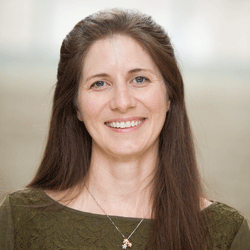The phospholipid bilayer has long been described as the cellular gatekeeper, placing bounds on the passive transport of proteins, small molecules, and even ions into and out of organelles. In fact, protein transporters embedded within the lipid membrane are critical to these gatekeeping functions, and offer precise control over the flow of materials across the membrane. In the 1990’s, it was discovered that some bacteria use compartmental systems as well, contrary to the long-held belief that bacteria lack such organization, and these bacterial “organelle” membranes are made entirely of proteins. We now recognize that bacteria use these complex systems – both in the lipid membrane and in the bacterial compartments – to control localization of proteins and metabolites, which provide advantages that engineers can capitalize on for biotechnology products.
We are repurposing bacterial transporters and protein compartments to improve bioproduction processes. We use synthetic biology, biochemical engineering, and protein engineering approaches to 1) sequester metabolic pathway enzymes and intermediates in the compartments for biochemical production and 2) to manipulate transporters for increased secretion of desired protein products. We also generate models to inform hypotheses about the mechanisms underlying all our results. In this talk, a common theme that will be explored is the importance of timing and single point mutations within the complex systems governing these processes.

Danielle received her B.S. in Chemical Engineering at Illinois Institute of Technology in Chicago, and her Ph.D. in Chemical Engineering from the University of Texas at Austin. She carried out postdoctoral research at the University of California San Francisco and the Joint Bioenergy Institute, while part of the Lawrence Berkeley National Laboratory. In 2009, she joined the Chemical and Biomolecular Engineering faculty at the University of California Berkeley, where she held the Charles Wilke Endowed Chair of Chemical Engineering and later the Merck Chair of Biochemical Engineering. In 2016, she moved her lab to Northwestern University. There, she directs the Synthetic Biology REU program and the Master of Biotechnology program. She is also on the steering committee of the Engineering Biology Research Consortium. She received several awards, including the Searle Leadership Award, the NSF CAREER award, and the 2020 Biochemical Engineering Young Investigator Award for her work on the construction of bacterial organelles using protein membranes. Her research focuses on building biomolecular devices for a wide range of applications, including bioenergy, living batteries, biomaterials, biosensors, biomanufacturing in resource-limited environments, and drug delivery. She is particularly interested in engineering multi-protein complexes, such as virus capsids and the machines that transport proteins and small molecules across cellular membranes.

